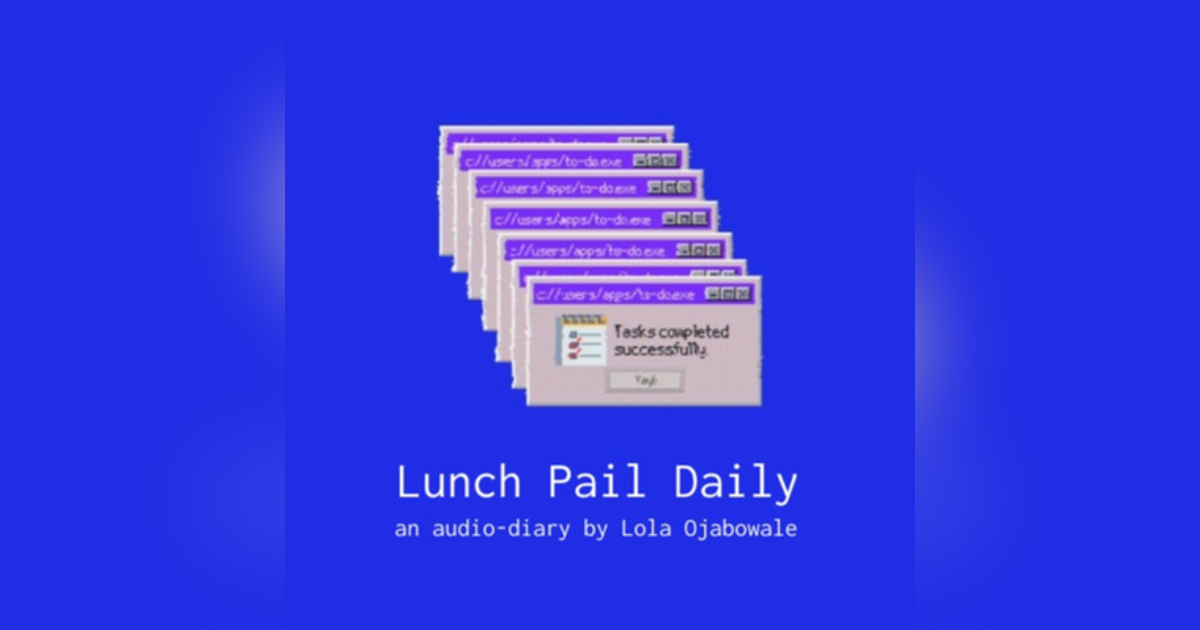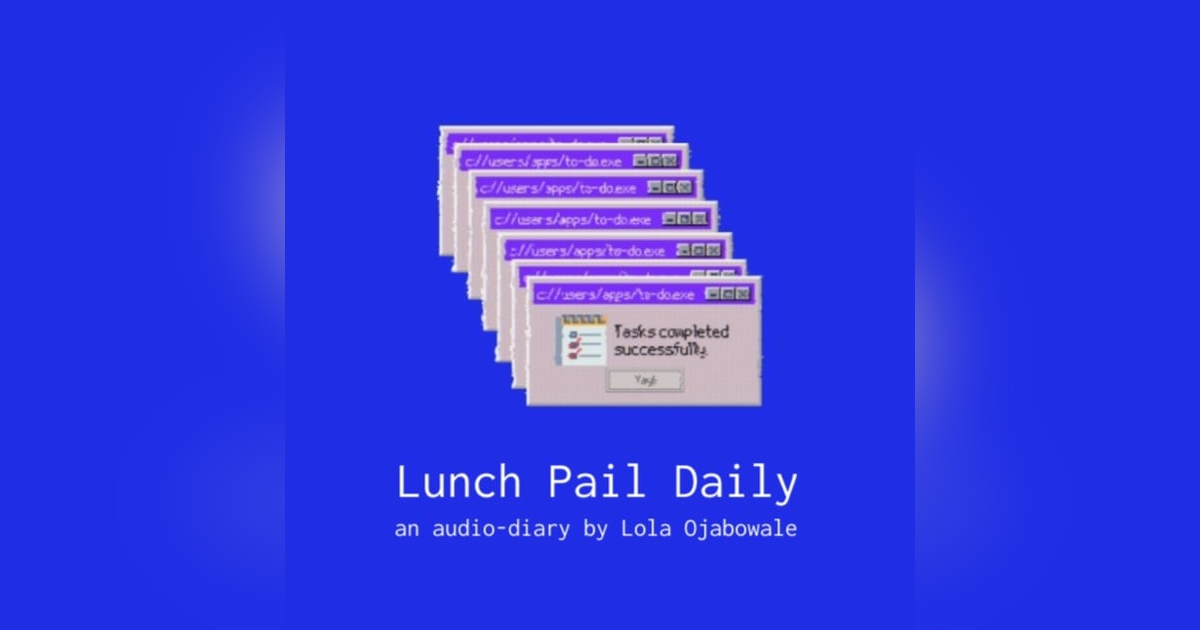#216 — 🔍 The Art of noticing

Noticing helps us be more creative, find flow, and spot new trends. Unfortunately, we live in an age of distraction where the ability to be present is often lost. Jamming about some exercises to get better at paying attention from Rob Walker's The Art of Noticing.
What's up everybody? This is Lola Ojabowale, founder of lunch pail labs. Welcome back to lunch pail daily, my personal audio diary on building and growing lunch pail labs, a digital product studio based out of Atlanta, Georgia. In today's episode, we're gonna jam about getting better at paying attention.
So I feel like in these past few episodes, I've been talking a lot about some productivity frameworks, whether it be flow, I'm finding that paying attention is central to a lot of those things. And even in personal life, like mental health, being present really helps stave off worry, and anxiety helps you accomplish tasks more effectively, or so I've read. And so I bought this book, The Art of noticing by Rob Walker, who is a journalist. And he even makes the case that paying attention is great for entrepreneurs, too. He has several examples and case studies of common inventions that were the result of people paying attention and being present. And so I flipped through this book. It's a book that has 131 exercises, to practice getting being present. And I found five exercises that I resonated with me and I think I really wanted to start start incorporating and wanted to share all of that with you all here.
So getting into it, the first five exercises first exercise is spot something new every day, you can go someplace familiar could be your morning commute could be a walk the grocery store, but the exercise is specifically to look for something that you haven't noticed before.
Second exercise making more use of senses make an auditory inventory. This can be done anywhere, at really any moment, you just sit quietly, and notice all the sounds in your immediate environment and make note of them. That could be a distant bark, car horns hum of the air conditioner, really anything.
This next exercise, I think it could be very interesting from like a use UX and product perspective. And it's intentionally tried to use a tool incorrectly. The example given in the book was a student who used her phone's digital compass to orient her gaze. So wherever was true north is where she would periodically look. I think it'd be neat to try this with a couple other things like what if I use my my jeep, my superhuman email, as a diary like that would be very much not the the use, but am I doing this exercise with different tools, like sounds creative, and might be a way to just like uncover new interesting things with like user experience.
Next one, record 10 metaphor free observations about the world this week. I think this book is oftentimes targeted towards some of the exercises are geared towards more like creatives and students and artists. And so the reason why it says metaphor free is because for the person who volunteered this example, like writers have the exam, like the propensity to say that things are like other things, like, I drink water, and it was like candy. And so the the exercise is to do things that are metaphor free.
And then the last one, which I also think is very interesting is write a letter to a stranger. Actually, sending the letter isn't important, that being alert every day to a stranger who might who might inspire you or not inspire you. But a stranger that you would write a letter to is kind of the exercise, and those are five of my favorite and I will also link the book that it all comes from in the show notes. So I will. That's it for Monday, and I will catch you all later.






